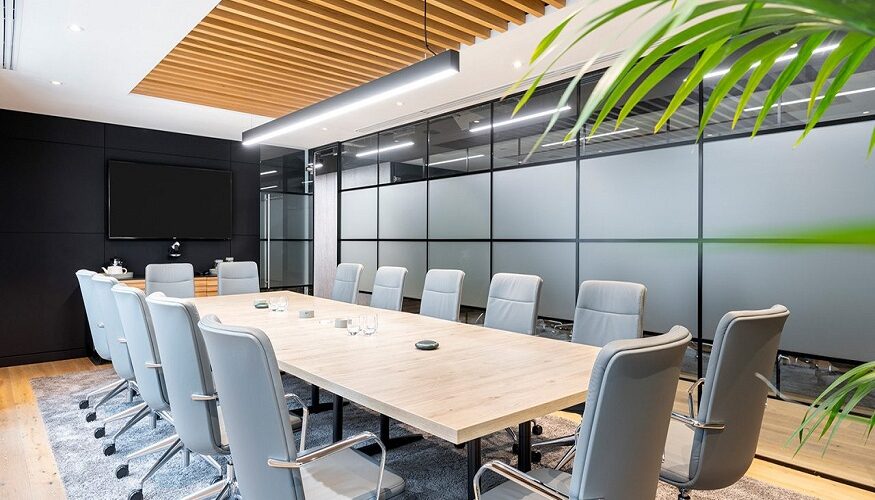If you’re a business owner, then you know how important it is to have a productive and inspiring workspace. You need to be able to get things done without distractions, but also keep your employees happy so they will want to come back each day. It’s a balancing act that requires careful planning. If you want to learn more about how coworking space design impacts productivity in coworking spaces or what types of elements can help make your office more productive for both guests and employees alike, then read on.
Placement matters
Space arrangements are everything. It’s important to think about the flow of people through the space, and how they will be interacting with each other. Are there going to be one-on-one meetings? Will people need to brainstorm together? If so, where will they go?
Having a quiet zone is key when it comes to productivity—but what about collaboration? The best coworking spaces have both. This way, people can work on their projects in peace or small groups as needed, but also have an area where they can collaborate with others if necessary.
Design improves productivity in coworking space
Productivity is a big concern for many coworking spaces. While it can be difficult to quantify the impact of design on productivity, there are some clear ways that your space can help increase it.
A common mistake made by designers is thinking that productivity means minimizing distractions and maximizing focus and concentration. This approach can inhibit creativity—a good environment should allow people to collaborate easily with their colleagues to collaborate more effectively on projects. A great way to encourage collaboration is by putting two people together in an open office space or grouping desks into pods rather than rows. This allows people who are working collaboratively on a project to make eye contact readily which improves communication.
Open spaces allow people new ideas and inspiration from other members who might have different perspectives than them so they come up with fresh ideas for creating something special in their lives or workplace environment – just like when you walk around outside during nature walks.
Color impacts the way you work
Color impacts the way you work, but few people realize the extent to which it can help or hinder productivity. Here are some color trends you should keep in mind when designing a coworking space:
Colors are powerful and impact mood: Researchers have found that colors like red, orange, and yellow stimulate the brain more than blue or green. These colors tend to make you feel energetic and motivated, so they’re great for areas where you want employees to be productive. Cooler colors such as green, blue, and purple tend to relax your mind—and since you can’t focus on two things at once, this could slow down progress if there is too much of it around your workspace.
Color coding is an old trick but one that still works: The best use of color coding is using different shades within each category (i.e., reds from lightest to darkest) so that no one gets confused about what shade means what level of urgency or importance at any given time.
Lighting has a key role to play in designing productivity
When you start designing your coworking space, one of the first things you should consider is lighting. Lighting has a key role to play in designing for productivity. It can be used to make a room feel more inviting and comfortable, or it can be used to help people focus on their work. Some people like bright lights while they are working, while others prefer dimmer lights so that they can relax and unwind after spending all day in front of a computer screen. A well-designed space will have plenty of options for lighting depending on what kind of mood you want your clients or employees to be in when they arrive at the office.
Name the rooms
The first step in creating a productive space is to give it a name. This can seem like an afterthought at first but goes a long way in helping people remember where they’re supposed to be going and what they’re supposed to be doing when they get there. Make sure your names are clear and easy to remember so that your coworkers don’t have trouble finding their way around the space (and so you don’t have to spend hours explaining yourself). If possible, try having some fun with this—younger generations especially respond well to fun titles such as “The Cube” or “The Loft” versus something more formal like “Office B.”
Use unique names for each room that will make people want to spend time in them. It’s important not only for productivity purposes but also because if everyone just calls everything by its official name (e.g, “the break room”) then nobody ever gets excited about going into any specific area of the office building.
Choose a theme that is attractive and inspirational for your workplace
When choosing a theme, make sure it’s consistent throughout the space to create a cohesive and harmonized environment. You can choose any type of theme you like, as long as it isn’t offensive or inappropriate, but the most popular themes in coworking spaces are nature-based (e.g., trees, flowers, rocks) or related to travel destinations (e.g., beaches). In addition to inspiring employees’ creativity and productivity, these kinds of themes also tend to encourage collaboration among coworkers who may otherwise not have cross-pollinated ideas.
Conclusion
The design of your coworking space is an important factor in the productivity of your coworkers. A well-designed workplace will help your members to be more productive and efficient, allowing them to focus on their work without distractions or interruptions from other people around them.

